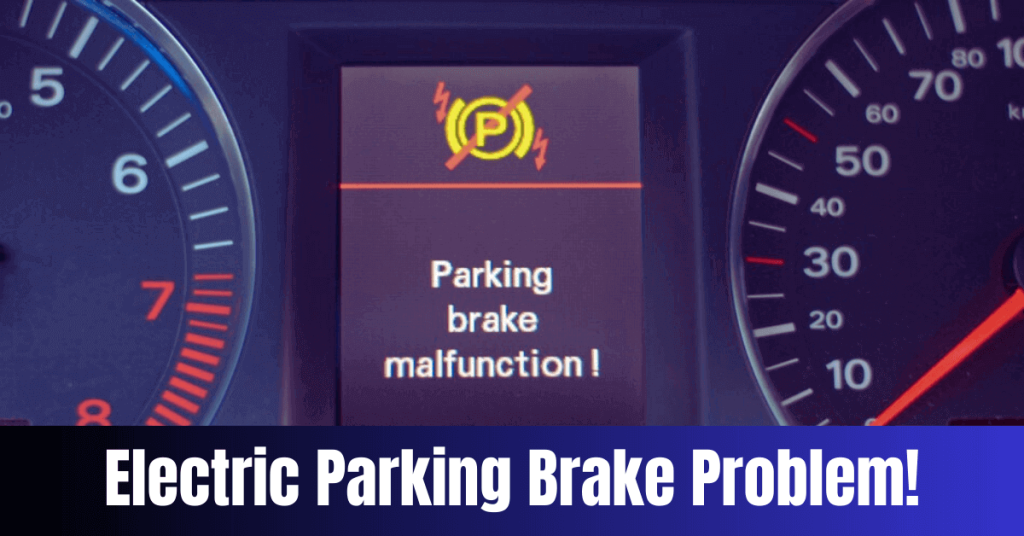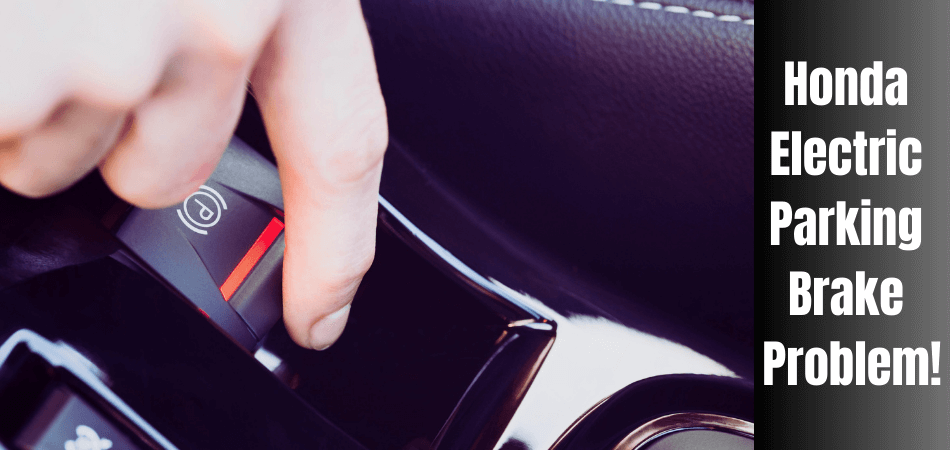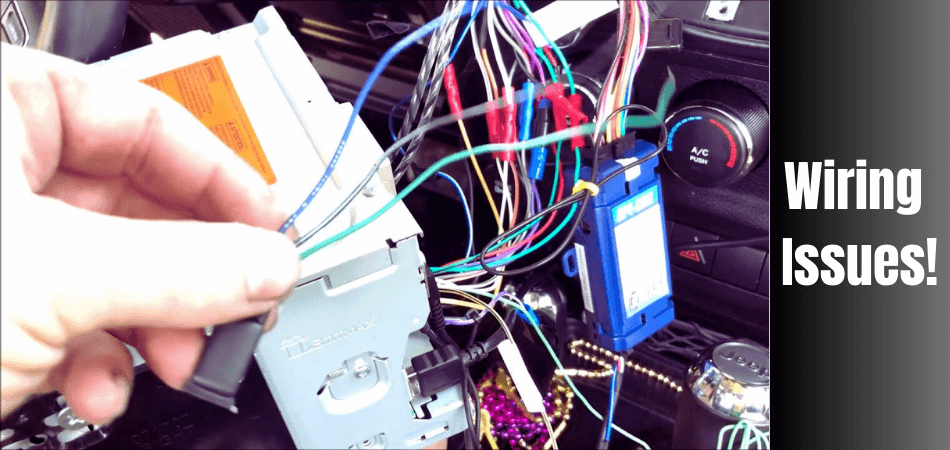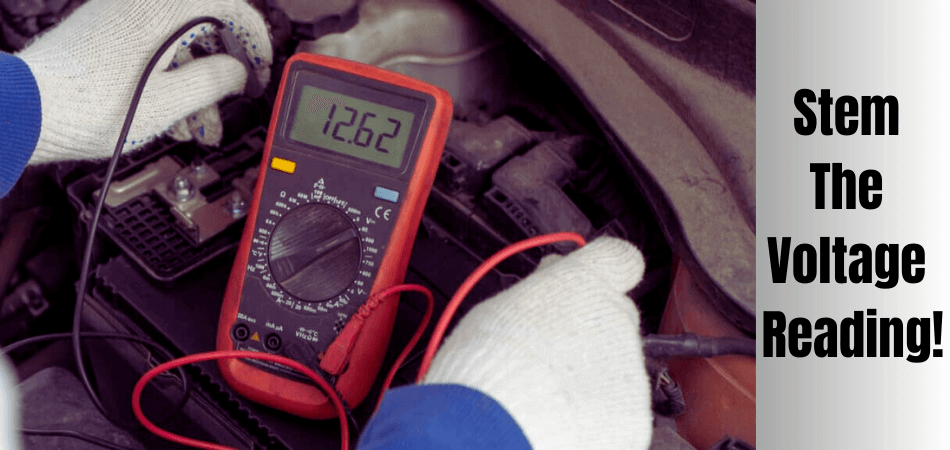
Automobile manufacturers have incorporated electric parking brakes as part of modern vehicle technology. One of the most important aspects you can do to maintain your automobile is to check the power supply to the braking system and reset the parking brake unit. However, like any other electronic system, there is a possibility of issues occurring. So what are the most common causes and how to fix electric parking brake problem?
Electric parking brake issues often stem from faulty switches or wires that connect the module to the actuator. These components may break, shorten, or open, leading to high resistance and potential problems.
Honda has produced numerous high-quality vehicles over the years. Its technology will always improve. When Honda’s new braking system fails, the “Electric Parking Brake Problem” error message is present.
As we proceed through this article, we’ll cover all the issues & how to fix electric parking brake problem.
What Is Honda Electric Parking Brake (EPB)?
The Honda Electric Parking Brake (EPB) is a brake system activated and deactivated for an electric motor rather than through a mechanical lever or cable. The system aims to release the brake when the driver shifts into or out of the park and is controlled manually using a switch or button in the vehicle’s cockpit.
Also, an Auto Hold feature maintains the vehicle’s position when stopped on hills or inclines. The drivers can take their foot off the brake pedal and have more convenience when stopped at the traffic light.
The Honda EPB system frees up space in the vehicle’s cabin by eliminating the need for a traditional handbrake lever or foot pedal. This is useful for vehicles with limited interior space.
Furthermore, the EPB system can provide more consistent and precise braking performance. If the driver forgets to release the parking brake before driving off, the system will automatically terminate the brake once the vehicle reaches a certain speed.
What Does Service Electronic Parking Brake Mean?
You should first comprehend how the traditional handbrake functions. To understand how the electro-parking brake functions. When using a conventional hand brake, a cable is interlocked each time the lever is raised.
The vehicle’s rear brake shoes or pads are pressed into the braking drums or discs by the cable. This enables you to secure the car in position. On the back axle of some cars, specifically for the handbrake, there may be separate pads and discs.
At that time, the car must be released for it to begin operating once the service electronic parking brake is in place. Brake fluid might be needed if the light stays on after release or flashes while driving.
The service electronic parking brakes are usually engaged when you park your automobile. Brake fluid addition could be helpful if something goes wrong, and you cannot remove your car from its position.
What Does the Electric Parking Brake Do?
Traditional Handbrake
To comprehend the functioning of the electronic parking brake, it is essential to understand the mechanism of the traditional handbrake. The conventional handbrake operates by pulling up a lever that tightens a cable. It results in the rear brake pads or shoes being pressed against the brake discs or drums of the vehicle.
Securely position the car and note unique pads and discs on the rear axle for the handbrake.
Modern Electric Handbrakes
Electronic parking brakes, or handbrakes, are standard in modern vehicles. While they work similarly to traditional handbrakes, the key difference is that electric motors are used to achieve the locking effect.
Lock the rear wheels of a vehicle by pressing a button, and unlock them by pulling the same button up. Both secure the vehicle by locking the rear wheels, whether a traditional handbrake or electronic parking brake.
What Are The Main Honda Electric Parking Brake Problems?

The electric parking brakes of many Honda vehicle owners have been causing severe problems. The dashboard unexpectedly displays the “Electric Parking Brake Problem” message, causing undue stress and worry. Several factors may contribute to this issue, including:
- Console Parking Brake Switch Malfunction
- Problems With The Caliper Parking Brake Servo Motor
- Faulty Wiring
We’ll briefly discuss each of them, including how to fix it:
Console Parking Brake Switch Malfunctioned in Electric Parking Brake
The most common problem with the Honda electronic parking brake is a faulty or dirty parking brake switch or button in the console. Vehicles typically place this button in the center console, right next to the place where the handbrake would normally be.
This area tends to gather dirt quickly, which can cause issues with the electric parking brake button. If this happens, you must disassemble the console and replace the button with a new one. You can purchase a replacement online or get help from your car dealership. Possible malfunction causes include spilled drinks, food crumbs, and other debris.
Problems With The Caliper Parking Brake Servo Motor
Honda vehicles utilize an advanced electric parking brake system with servo motors on the rotors to secure the wheels when engaged. Unlike traditional mechanical systems that rely on cables, this modern technique offers superior control and precision for the brake system.
If the servo motor malfunctions, replacement is necessary. It is relatively easy to replace the engines. However, some Honda owners choose to do it themselves. However, if you are still unsure of how to accomplish this, it is recommended that you consult a professional mechanic. Otherwise, take your Honda vehicle to a Honda service center for assistance.
Honda Electric Parking Brake Issue Due To Faulty Wiring

If your parking brake is malfunctioning, the issue may be faulty wiring. Inspecting the wiring for any loose or damaged connections is a good idea to ensure everything functions correctly.
Remember to check the center console wiring and clips that connect different parts. While wiring problems are unfamiliar with electric parking brakes, they are still possible.
What are The Causes Of The Electric Parking Brake Problem?
Like any complex automotive system, the Honda Electric Parking Brake (EPB) can experience various problems. Honda owners may experience the error “Electric Parking Brake Problem” for various reasons. They may wonder how to fix electric parking brake problem.
The leading EPB issues can arise for various reasons, such as switches or wires between the module and actuator being broken, shortened, or opened. Additionally, high resistance in these components can also be a potential cause.
To determine if your vehicle has an electric parking brake issue, there are two indicators to look out for. Firstly, the parking brake light will flash. Secondly, a message will appear on the dashboard notifying you that your vehicle requires immediate parking brake servicing.
Some common causes include:
Brake stuck
The most common problem people face with Honda’s electronic parking brake (EPB) system is that the brake may become stuck in the engaged position. This can happen because of a malfunctioning brake switch, a problem with the electronic control module (ECM), or a problem with the brake actuator.
Wiring Problems
An issue can occur if the wiring is loose or poorly connected. All wiring in the center console and any clips that connect to other components fall under this category. If you are dealing with wiring, it is usually not a problem. However, in some cases, it can cause problems, so be careful.
Warning Light
If there is a problem with the system. Like a defective motor, a malfunctioning brake system sensor, or a software fault, the EPB warning light might appear.
Automatic Brake Release
The EPB system should agree to release the brake whenever the driver transfers out of the park. If it is defective like a malfunctioning brake switch, the electronic control module (ECM), or a brake actuator. The car may not be able to move forward.
Manual Control
If the driver cannot control the EPB using the switch or button in the cockpit. It could indicate a problem with the electrical connections or the control module.
Auto Hold Function
If the vehicle’s Auto Hold function is not working well. The car may not stay stationary when stopped on a hill or incline. Which a malfunctioning sensor or other mechanical or electrical problem could cause.
Noise
In some cases, drivers have reported hearing noise from the EPB. When activated or deactivated, which can indicate a problem with the motor or other components.
Warning Message
In some cases, drivers have reported seeing a warning message displayed on the dashboard screen, such as “Check Electric Parking Brake,” indicating a problem with the system that needs to be addressed.
It’s important to note that multiple things can cause these problems. A certified technician should be the one to diagnose the root cause. Also, suppose you experience any of these issues with your Honda EPB.
How To Fix Electric Parking Brake Problem! Steps Explained!
Here are some steps you can take to try to fix it:
- Park Your Vehicle
- Carefully Loosen the Affected Wheel’s Lug Nuts
- Extract the Wheel
- Locate the Electrical Connector to the Caliper
- Check the brake fluid level
- Check the Power Supply Received By the Electric Actuator Motor
- Examine the brake pedal position sensor for concerns
- Stem the Voltage Reading
- Test the Actuator
- Install everything back in its place.
Watch Here:
Let’s explain them briefly:
Park Your Vehicle
Before troubleshooting, it is essential to park your vehicle on level ground in a safe area. To ensure maximum safety, place wheel chocks behind the rear wheels.
Carefully Loosen the Affected Wheel’s Lug Nuts
To get the lug nuts loose enough to remove the wheel, you should use a tire wrench and turn it backward.
Extract the Wheel
Before proceeding, removing the wheel on the affected side is crucial. Using a jack to lift the vehicle is highly recommended to ensure safety. Ensure that a jackstand is securely in place to provide support.
Locate the Electrical Connector to the Caliper
Finding and carefully removing the caliper’s electrical connector is crucial to any testing procedure. To prevent injury, release the connector’s locking tabs first and then pull it free.
Check the brake fluid level.
Let’s say you noticed the brake fluid was low. It may be the root of the problem with the electric parking brake. Be sure to check that the brake fluid level is set to the specifications of the owner’s manual.
Check the Power Supply Received By the Electric Actuator Motor
Use a multimeter tester to check the electric actuator motor’s power supply to make sure it’s functioning properly. Select the “DC” icon with one straight line and three short horizontal lines below it to set the multimeter to direct current (DC) measurement mode.
The red and black wires can then be connected to the connection on either end of the central harness or the main body of the wiring. You can use this as a reliable power supply test.
Examine the brake pedal position sensor for concerns.
Suppose there is a difficulty with the brake pedal position sensor. It may lead to issues with the electric parking brake. Across most situations, this can fix by changing the brake pedal position sensor.
Stem the Voltage Reading

Before moving forward, it is imperative to check the voltage reading. It needs to be exceedingly low or even zero at the outset. Enlisting another individual’s aid to turn on the ignition or start the engine and engage the parking brake is necessary.
Check voltage for optimal actuator performance. Range should be 10-12V or -10 to -12V. Inspect wiring and fuse for potential issues if the voltage drops below 10V or reaches zero.
Use a voltage range of 20 volts or higher for accurate readings on older multimeter testers. Avoid other voltage settings, especially those ending with MV. Incorrect settings can damage the multimeter, particularly on a 12-volt system.
Test the Actuator For Honda Electric Parking Brake Problem
To ensure the actuator winding is not damaged and has continuity, strictly adhere to these steps:
1. Identify the connector that is linked to the caliper.
2. Set the multimeter to the omega symbol for continuity or ohms.
3. Quickly self-check by plugging in the leads and activating the beep. The expected result is zero. If your multimeter or test leads show a higher result, they may need to be fixed. You should replace them with working ones. After ensuring everything is working properly with an internal self-test, connect the leads to the connector.
When the actuator starts winding, you will hear a beep which confirms it is working. If there is no beep, the issue might be from a different source, like the switch. In case the actuator solenoid needs replacement, there will be no beep.
Install everything back in its place After Inspecting.
- Ensure that you return everything to its proper position. This includes taking off the jack stand, putting the tire back on, and securing the lug nuts.
- Utilize a tire wrench and turn it clockwise to tighten the lug nuts. You can then lower the jack, detach it, and finalize the tightening of the lug nuts.
- Repeat all the steps to examine the actuator on the opposite side.
It is essential to address any issues with the electric parking brake as soon as possible. To ensure the safety of the vehicle. If you cannot fix the problem yourself, it recommends seeking the help of a mechanic.
How To Reset Your Modern Electric Parking Brake problem?
In order to reset the electronic parking brake on a Honda Civic, it is important to adhere to the following steps:
- Turn the Ignition on. You should put the car in Park and not use the brakes when parking.
- A simple pull and button release is all it takes to activate the electric parking brake.
- The procedure (pulling, holding, and releasing the button for the electric parking brake) must be repeated twice. At first, you’ll want to pull and hold the button for the electronic parking brake until you hear a mechanical beep. You can let off the button after you hear the beep. Then, raise the switch again by pulling on it. You can release the button when you hear two mechanical beeps, which should take about 3 seconds.
Conclusion: How To Fix Electric Parking Brake Problem?
If you’re still worried about how to fix electric parking brake problem, Honda electric parking brake problems happen for various reasons. If you experience problems with the Electric Parking Brake, there are steps you can take to resolve the problem. Such as Park Your Vehicle, Carefully Loosen the Affected Wheel’s Lug Nuts, Extract the Wheel, Locate the Electrical Connector to the Caliper, etc.
As a driver with an electric parking brake in your car, you may have experienced both positive and negative outcomes. When functioning correctly, the brake is user-friendly and enhances the appearance of your vehicle’s interior.
In short, two indicators indicate that your vehicle may have an electric parking brake issue. The first is a flashing parking brake light, and the second is a message on the dashboard. If either of these warnings appears, you must promptly seek parking brake service for your vehicle.
Keeep Reading Why Is My Jeep Compass Screen Not Working?: Facts!
FAQ
Does the current Honda model’s upgrade include the Honda electro-parking brake?
Depending on the model, some Honda vehicles might not be compatible with the electro-parking brake system. To find out if the Honda electro-parking brake installs on your car, get in touch with your neighborhood Honda dealership.
Does the Honda electro-parking brake need maintenance on a regular basis?
No, the Honda electro-parking brake doesn’t need maintenance frequently. It designs for long-term use in the vehicle.
What are the essential components of a parking brake system?
The parking brake is engaged and disengaged by a lever inside the car’s cabin.
Steel cables, also known as parking brake equalizers, attach to the back of the car’s main brakes.
What types of sensors are used in the parking system?
Parking sensors use ultrasonic or electromagnetic technology to alert drivers of potential obstacles while parking. These sensors, placed in cars, serve as proximity detectors.
Are parking brakes and handbrakes equivalent?
The parking brake is also called a handbrake or an emergency brake (e-brake). This is a device used in road vehicles to keep the vehicle securely parked.







Leave a Reply